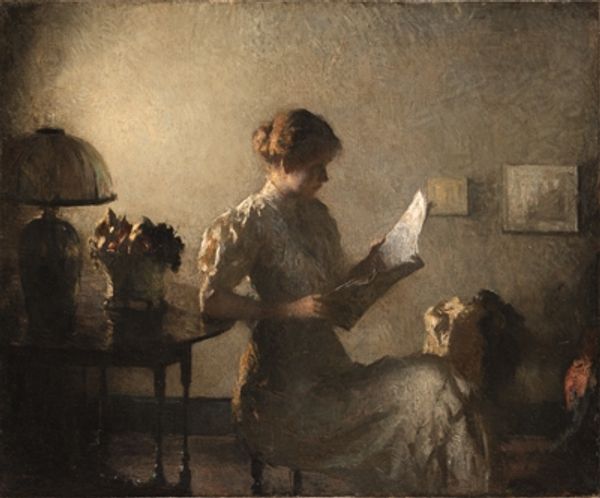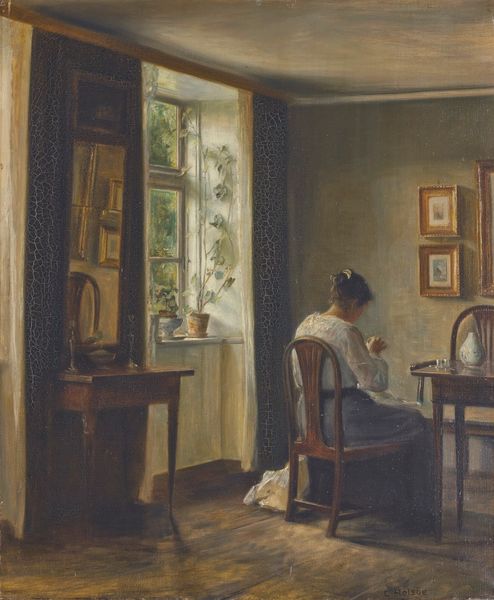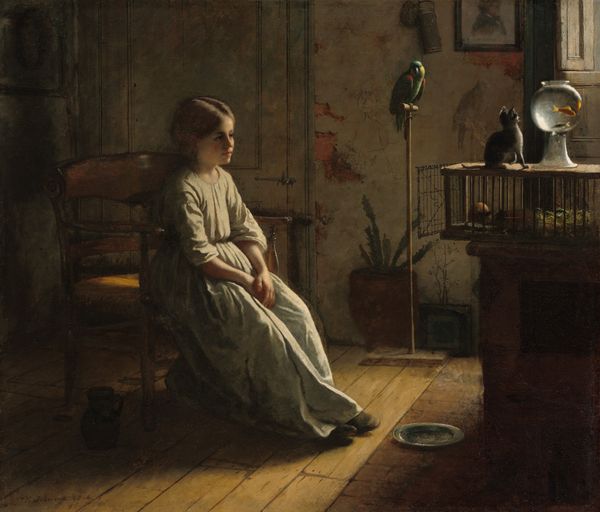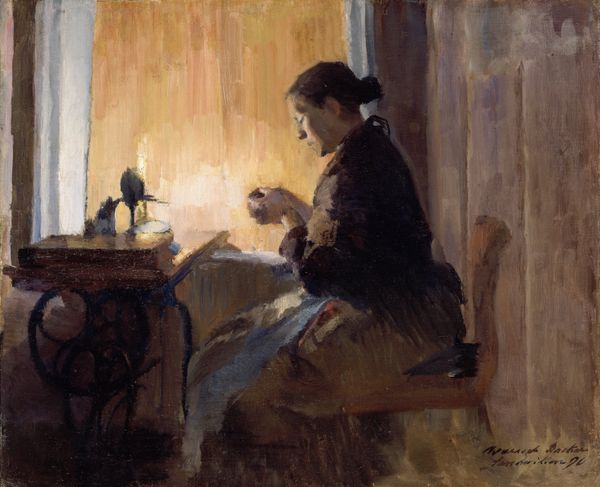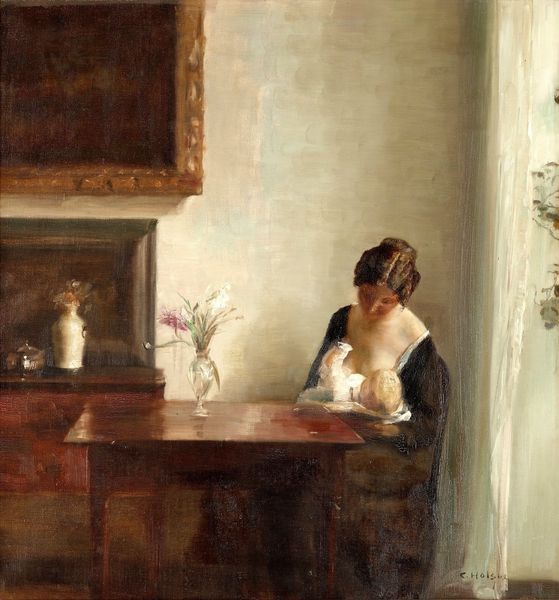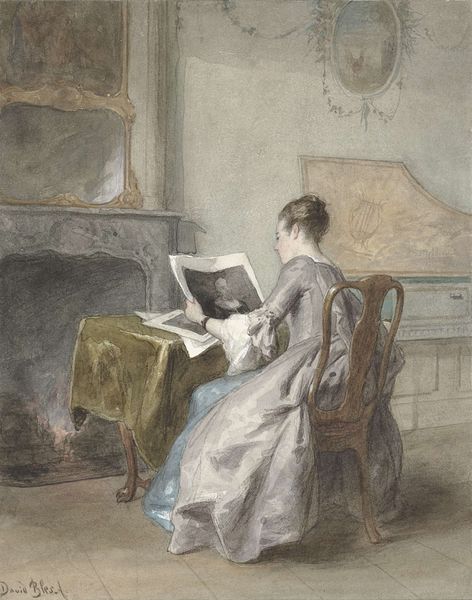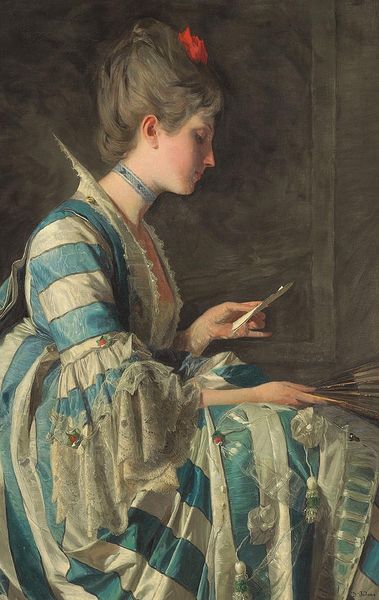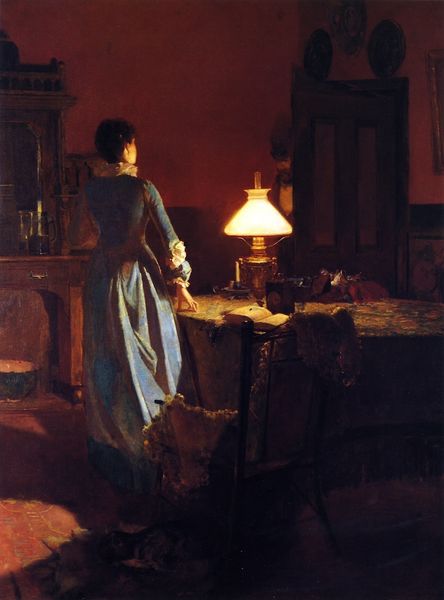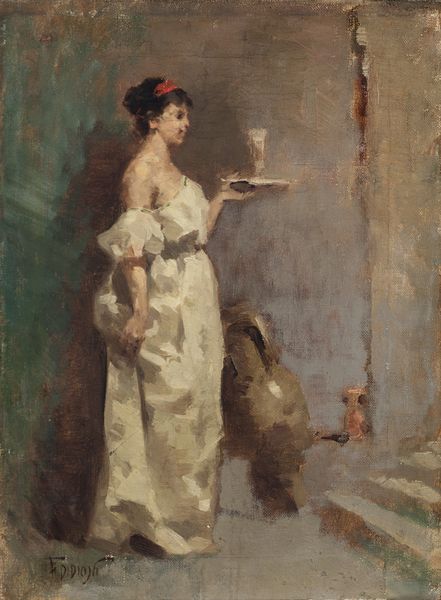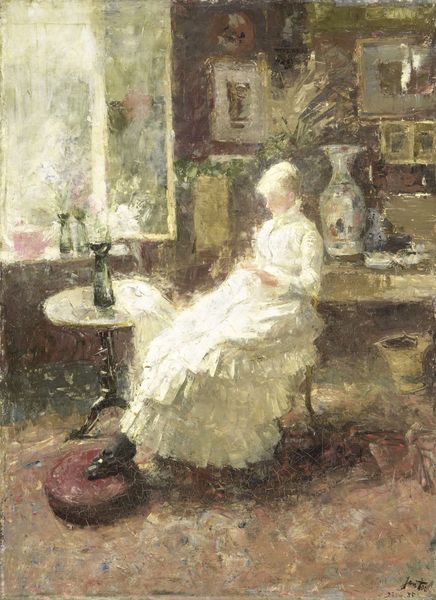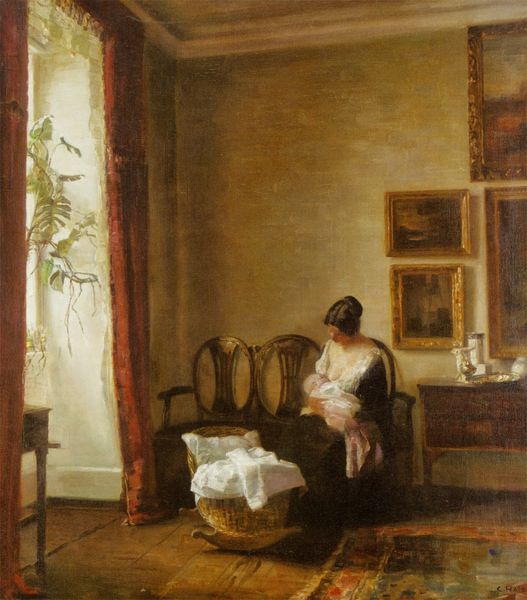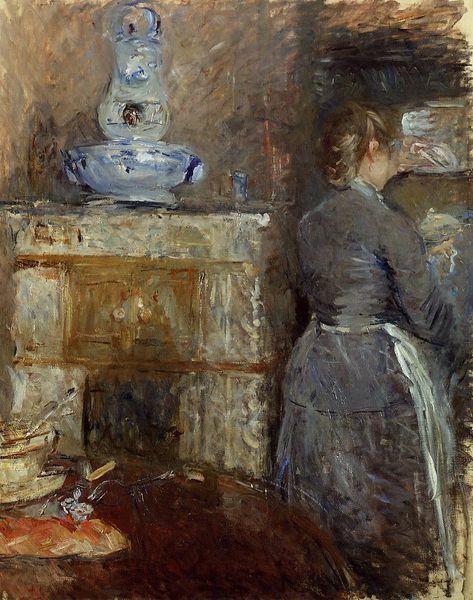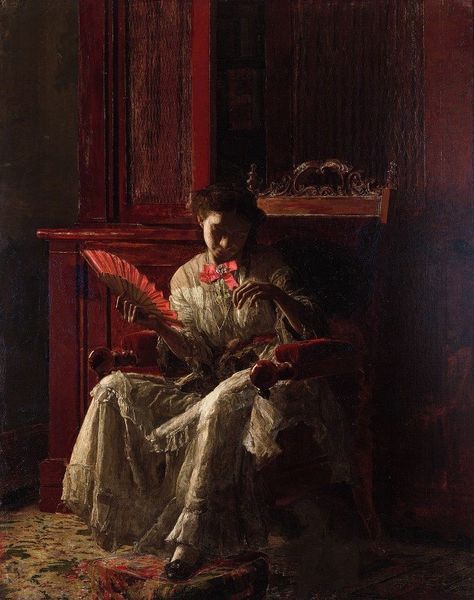
Copyright: Public domain
Editor: This is "The Seamstress," painted in 1913 by Frank Benson, using oil on canvas. I find the intimate domestic scene so compelling. It feels very hushed and serene. What jumps out at you in this work? Curator: Immediately, I consider the production. Benson, often celebrated for his society portraits, here turns to a working woman, yet maintains a certain distance. Note the detail – or lack thereof – in her garments versus the objects around her. What does the materiality tell us? Editor: You mean, how does the way he paints the different elements reflect their social or economic value? Curator: Precisely! Think about the very act of sewing in 1913. What kind of labor is represented, and who is typically engaged in it? The composition places the seamstress near a window, her light source, but also a potential connection to the outside world. Is she crafting for herself, or for a consuming public? Editor: That's a great point. Is Benson commenting on the quiet dignity of labor or subtly reinforcing class structures through his artistic choices? Curator: It's that tension which intrigues me. Benson clearly values skilled craft, rendered in oil paint itself, a luxurious medium, however he’s also depicting a scene deeply embedded in the social fabric of labor and domesticity of the period. Look closer— how much information do we *really* get about *her* life through his depiction? Editor: This has definitely made me rethink my initial perception of serene beauty! The materiality speaks volumes about class and labor. Curator: Indeed! By looking closely at the “how” and “what” of creation, we gain insight into the artist's social perspective and its wider historical context.
Comments
No comments
Be the first to comment and join the conversation on the ultimate creative platform.
